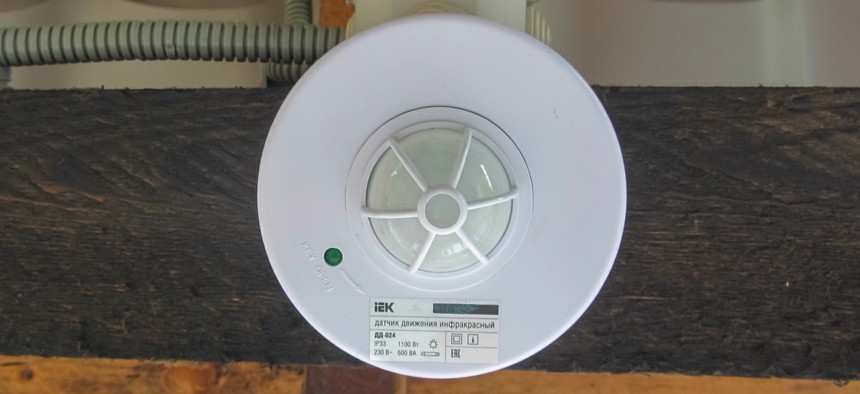Confronted With Vacant Building Fires, Louisville Turns to Civic Hackers

A pilot program is getting underway in the Kentucky city this week to test new smoke detector devices developed by members of the local civic technology community.
Dozens of fires erupted during recent years in vacant buildings located in the west end of Louisville, Kentucky.
Of 459 blazes between 2012 and 2015 in the Louisville Fire Department’s District 1, which covers the area, 125 involved unoccupied property. And last year 40 percent of the structure fires in Louisville occurred in vacant buildings, according to a fire department spokesperson.
Such fires are a threat not only to the buildings where they are sparked but also for occupied houses nearby and responding firefighters. “They happen late at night,” said Capt. Salvador Melendez, a public information officer for the fire department. “The homes are so close together that, next thing you know, the home next door is involved.”
Some of the fires are accidentally ignited by homeless people trying to keep warm in colder months, according to Melendez. Other times arson is involved. But a common problem is that fires in unoccupied buildings go unreported until the flames become substantial. “If it’s a vacant home, more than likely,” Melendez said, “when firefighters arrive, that fire is well advanced.”
A Civic Tech Solution?
Seeking to cut down the time it takes to detect and respond to fires in vacant properties, the local government in Louisville will begin testing new technology this week.
As part of a pilot program, solar-powered smoke detector devices will be inserted into nine vacant houses. In the event of a fire, the devices are designed to send authorities an alert using a cellular 3G wireless signal.
The technology is not from a traditional vendor. It was developed by a team of local “civic hackers”— Nathan Armentrout, James Gissendaner and David Jokinen.
Last November, the trio took part in a competition, a “hackathon,” to come up with technology ideas to address the fire risks from vacant buildings. Four teams participated in the event, and the detector device Armentrout, Gissendaner and Jokinen came up with won out. Judges included a member of the fire department and a person who works on local 911 services.
After the hackathon, Louisville’s former chief of civic innovation, Ted Smith, decided to go a step further and actually pilot the technology, according to Ed Blayney, innovation project manager in the Louisville Metro Government’s Department of Performance Improvement and Innovation.
The pilot program is scheduled to last about six months, Blayney said. As for what might happen with the technology when the testing is completed, he said it’s still too early to know.
Each smoke detector rig costs about $150. So far, the pilot program has not required any taxpayer money, according to Blayney. Up to $5,000 is available for the project from Louisville’s Civic Innovation Fund, which comes from sources like grants and donations.
Melendez said that the fire department sees promise in the smoke detector devices.
“This is going to be a very instrumental tool,” he said.
‘Starting With The Problem’
During the pilot, the devices will be set up to alert Blayney by phone if a fire breaks out in one of the buildings where they’ve been installed. He would then call 911 to initiate a response.
“It’s a little wonky right now,” Blayney acknowledged, after describing the testing process.
But when it comes to testing the devices, he’s fairly confident they will detect fires and issue alerts. He is more concerned about other aspects of the technology. For instance, the detectors are solar-powered, and many vacant buildings tend to be shadowy inside. “Are they going to hold a charge?” Blayney said. Another concern is theft. “Are people going to rip them off?”
Asked what he thought was different about this project versus one with a standard procurement process for government technology, he replied: “You’re starting with the problem.”
“Going into the hackathon, we knew what the problem was. We didn’t really know what the solution was,” Blayney continued.
When drafting a typical request for proposals for products or services, he said, “you’re almost defining the solution in a lot of ways.” Whereas collaborating with the civic technology community, he said, was “a lot more open ended, a lot more creative.”
Bill Lucia is a Reporter at Government Executive's Route Fifty and is based in Washington D.C.
NEXT STORY: L.A. Metro Expands Nation’s Largest Clean-Air Bus Fleet With Federal Grant






